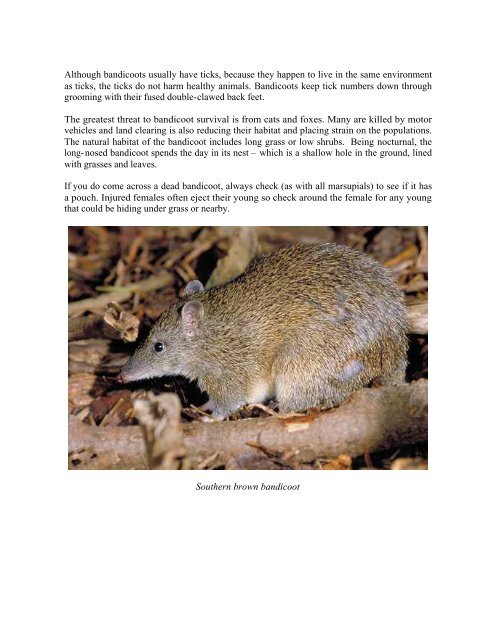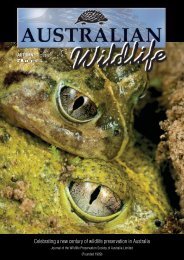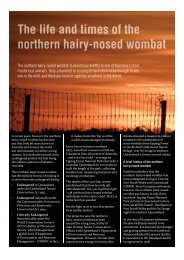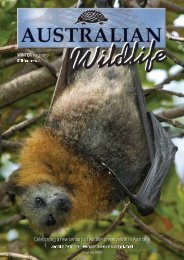Bandicoots - Wildlife Protection Society of Australia
Bandicoots - Wildlife Protection Society of Australia
Bandicoots - Wildlife Protection Society of Australia
Create successful ePaper yourself
Turn your PDF publications into a flip-book with our unique Google optimized e-Paper software.
Although bandicoots usually have ticks, because they happen to live in the same environment<br />
as ticks, the ticks do not harm healthy animals. <strong>Bandicoots</strong> keep tick numbers down through<br />
grooming with their fused double-clawed back feet.<br />
The greatest threat to bandicoot survival is from cats and foxes. Many are killed by motor<br />
vehicles and land clearing is also reducing their habitat and placing strain on the populations.<br />
The natural habitat <strong>of</strong> the bandicoot includes long grass or low shrubs. Being nocturnal, the<br />
long-nosed bandicoot spends the day in its nest – which is a shallow hole in the ground, lined<br />
with grasses and leaves.<br />
If you do come across a dead bandicoot, always check (as with all marsupials) to see if it has<br />
a pouch. Injured females <strong>of</strong>ten eject their young so check around the female for any young<br />
that could be hiding under grass or nearby.<br />
Southern brown bandicoot





